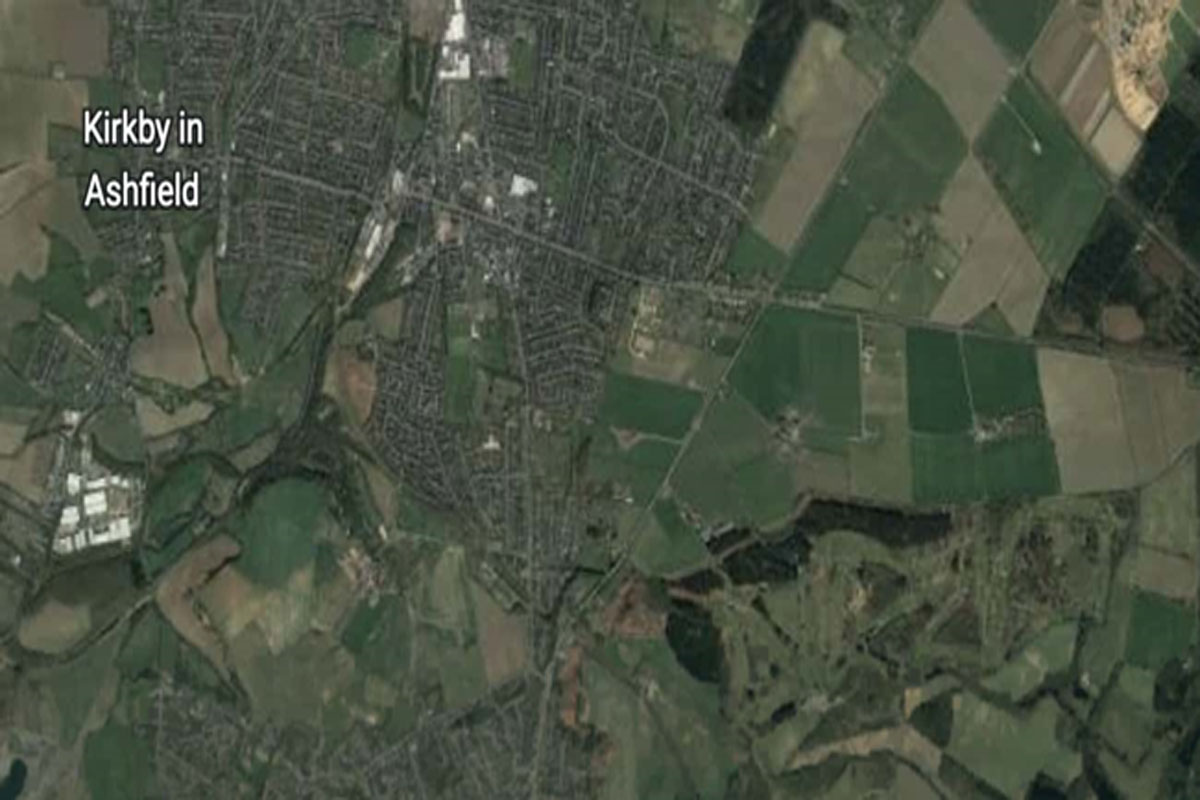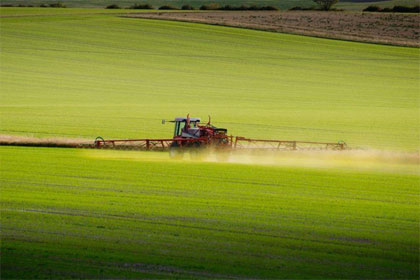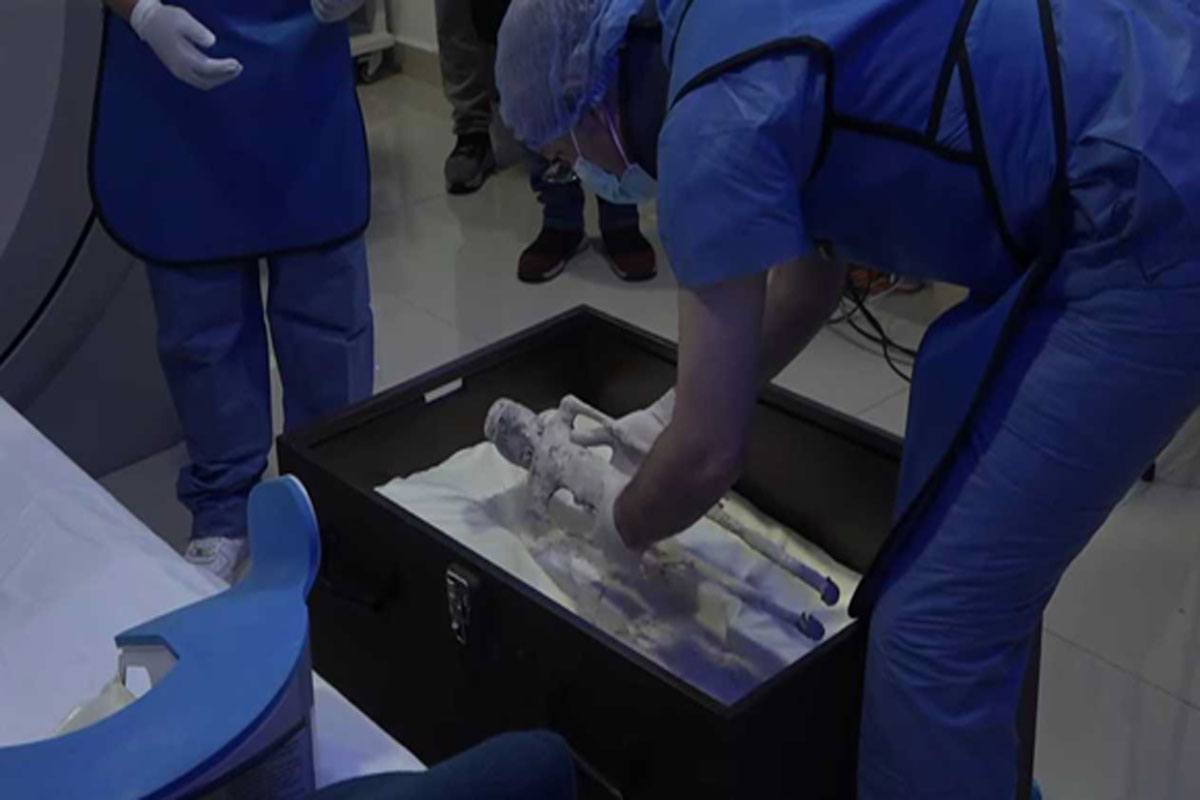
Hundreds Of Children Fell Ill During The Hollinwell Incident Of 1980, And We Still Don’t Know Why
Amanda Boisen
It’s hard to imagine danger lurking at a marching band competition on a beautiful summer day in scenic Nottinghamshire, England. But on July 13, 1980, more than 300 children and adults at the Hollinwell Showground fainted or fell ill, for reasons that remain largely unsolved decades later.
The “Hollinwell Incident” was officially ruled a case of mass hysteria, but certain aspects of this bizarre day don’t fit within the parameters of that phenomenon. Uncertainty has led to a variety of explanations, some more feasible than others, leaving victims, scientists, and internet sleuths vexed.
________________________________________
• Photo: Google Earth
 In July 1980, A Band Competition Took Place At Hollinwell Showground
In July 1980, A Band Competition Took Place At Hollinwell Showground
The organizers of the 1980 Brass and Marching Band Competition at Hollinwell Showground couldn’t have chosen a better day for the event. It was bright and warm in the small market town of Kirkby-in-Ashfield, in Nottinghamshire, England, as 500 children from 11 bands, some traveling from up to 40 miles away, arrived to enjoy carnival food and performances from talented youths eager to impress judges.
• • Shortly After Performances Began, Band Members Began To Collapse
The event began at 9 am, and not long after, at 10:30 am, trouble began. Children and a few adults began to collapse, and whatever the cause, it seemed to be contagious. Over the course of the morning, people of all ages fainted, falling one by one like “ninepins,” witnesses described. What had been a summer carnival in the Midlands soon became something more akin to a battlefield.
Panic was palpable as conflicting causes were reported to festivalgoers through a speaker system. Authorities first thought food poisoning was the culprit, so they warned attendees not to eat the ice cream. Next came a rumor that the water was contaminated, adding to the fear and confusion. Adults scrambled to attend to children strewn across the grass in various states of distress and illness.
• • People Exhibited A Wide Variety Of Symptoms
Perhaps what created the most confusion was the broad array of symptoms children and adults experienced as the affliction spread through the showground. Although many collapsed from dizziness and nausea, others experienced more unexpected symptoms.
One witness reported sensations of pins and needles in her tongue and lips, and the inability to use one arm, while another recalled chest pains that felt like nerve gas poisoning. Other complaints included watery eyes, sore throats, foaming mouths, numbness, vomiting, and a metallic taste in the mouth. Most of the affected people collapsed due to extreme dizziness, but many truly fainted and lost consciousness.
• • Photo: Oxymoron / geograph / CC-BY-SA 2.0
 More Than 300 People Were Afflicted
More Than 300 People Were Afflicted
Of the more than 500 attendees, over 300 adults, children, and babies fell ill during the incident. It seemed that any age or gender was susceptible to the mysterious effect. Early reports also suggested five horses became ill, but this was later denied by organizers and C.I. Ogden, who led the police inquiry.
Many people were whisked away to nearby hospitals, which seemed unprepared for the sudden influx of confused, frightened patients. Witnesses recalled seeing children and adults on stretchers in the corridors. Four local hospitals were placed on red alert due to the 259 casualties brought by ambulance for treatment; nine people were kept overnight.
• • Subsequent Investigations Could Find No Clear Cause For The Outbreak Of Illness
Local authorities immediately launched an investigation. They took soil samples, tested the food and water served, and interviewed witnesses and victims. Although the initial testing revealed no bacterial impurities in the food or water, the soil testing made many people speculate.
A pesticide with tridemorph, an ingredient that has since been banned by the UK government, had been used on the field and surrounding fields. In 1980, although the pesticide was considered safe, many wondered if the harsh chemicals could have contributed to symptoms consistent with exposure to fumes. Regardless, officials could not name a definitive cause, and finally settled on the hotly debated conclusion of “mass hysteria,” which according to the APA Dictionary of Psychology is “the spontaneous outbreak of atypical thoughts, feelings, or actions in a group or social aggregate.”
For many of the victims, however, the mass hysteria conclusion has never felt right. Over the decades, it seems to have only led to more distrust of officials, or even the belief that a cover-up took place.
• • Photo: Richard / Flickr / CC-BY 2.0
 Many Theories Circulated At First
Many Theories Circulated At First
In the weeks following the incident, theories began to circulate, ranging from plausible to conspiratorial. A man in Scotland phoned police to suggest high-frequency radio waves were responsible, and although a high-frequency transmitter was found nearby, it was ruled out as the cause. Others pointed to fumes from a plastics factory a few miles away, but the wind had been blowing in the wrong direction for this theory to be possible.
Harsh cleaning supplies for toilets were on-site, leading many to wonder if a mixture of bleach powder and pesticides could have caused a reaction. A doctor suggested the Coxsackie virus, known to cause water-filled blisters and to be active locally. Other theories included radiation or underground gas.
Things began to take an even stranger turn when a few overseas Associated Press reports mentioned an “invasion from outer space.” Just over a week later, it was revealed that police had indeed investigated reports of a UFO landing in the field adjacent to the show. No evidence was found for any “landing,” but the police response demonstrated the desperation authorities felt in seeking a cause.
• • Photo: Charles Bowman / Shutterstock.com
 The Most Popular Theory Named Pesticides As The Culprit
The Most Popular Theory Named Pesticides As The Culprit
Among all the theories, pesticides seemed to be the most popular and probable culprit, especially for local residents and those who experienced the frightening day firsthand. The pesticide Calixin, trade name for tridemorph, had been used on fields nearby. Tridemorph was considered safe at the time, but the British government has since banned the pesticide. The World Health Organization has classified it as a Class II, “moderately hazardous” pesticide that is harmful if swallowed and irritating to eyes and skin.
Some eyewitnesses claimed they saw a cloud of insecticide drifting across the showgrounds, kicked up by all the marchers, that attendees could have breathed in. Those who disagree with the theory, however, claim it doesn’t explain the mass fainting that seemed almost contagious as it spread through the crowds of attendees. Watery eyes and sore throats were potential symptoms of pesticide harm, but not a wave of abrupt unconsciousness.
• • In The End, With No Hard Evidence, The Incident Was Ruled An Instance Of Mass Hysteria
When authorities made their final conclusion of mass hysteria, public reaction was not positive. Adults especially took offense to the implication that they or their children were faking symptoms or mentally unstable. Many also felt this explanation was just a cover-up for police incompetence or a nefarious plot. To be fair, the symptoms of mass hysteria do somewhat match with the experiences at Hollinwell. In fact, there are many historic examples of mass hysteria that feature fainting, nausea, abdominal pain, convulsions, headaches, tremors, and hyperventilations, often affecting women and children, especially when they are grouped together in institutions such as schools or clubs.
Still, victims weren’t the only ones dissatisfied with the official conclusion. Dennis Skinner, one of three MPs who called for a government inquiry, said the “mass hysteria” verdict was “an insult to the intelligence and another cover-up by the Establishment.” Arthur Peacock of the Mansfield Ecology Party wrote to a number of journals demanding the uncovering of “a major public scandal.”
• • Many Of The Victims To This Day Are Adamant Their Symptoms Were Real
For many of the Hollinwell attendees, their symptoms were more than the phenomenon of hysteria. One woman claims to have suffered from health problems her whole adult life since that day – she’s been unable to get pregnant naturally, had her left kidney removed, and had double breast cancer. Her friend, also a Hollinwell victim, ended up with breast cancer. While there’s no evidence to support a link between the incident and later health problems, the woman said “you just don’t know.”
The Ashfield District Council’s current leader, Jason Zadrozny, said he no longer stands by the report, and “we have sympathy with anybody who is still suffering from health implications.” He added, “This was a tragedy, and people still talk about it – especially in Kirkby.”
ranker.com



















